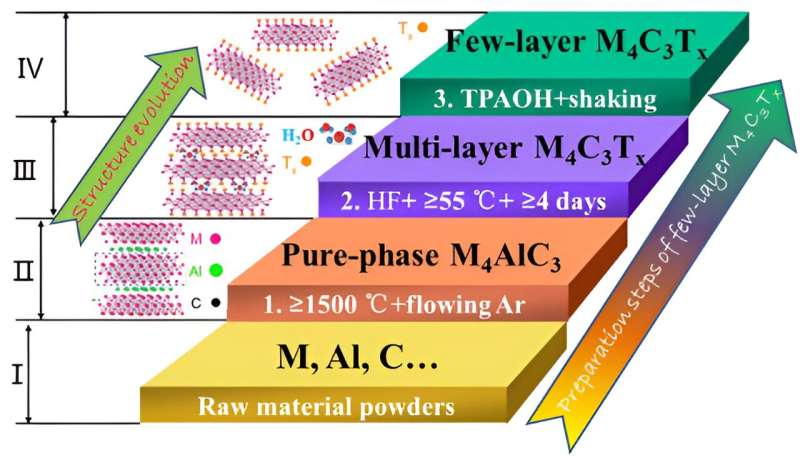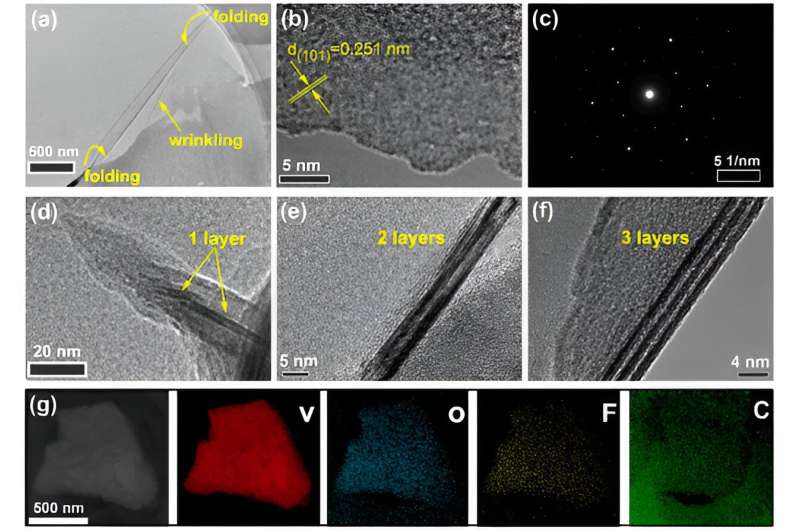This article has been reviewed according to Science X's editorial process and policies. Editors have highlighted the following attributes while ensuring the content's credibility:
fact-checked
peer-reviewed publication
trusted source
proofread
New strategy proposed for defect-free few-layer MXene nanosheets with enhanced physicochemical properties

Researchers from the Hefei Institutes of Physical Science of the Chinese Academy of Sciences have proposed an optimized synthesis strategy to obtain defect-free low-layer M4C3Tx (M = V, Nb, Ta) MXene nanosheets. Their results have been published in Advanced Science.
MXene materials have enormous potential for applications such as energy storage, energy conversion, and electromagnetic shielding due to their excellent physical and chemical properties. M4C3Tx (M = V, Nb, Ta) MXenes have received much attention.
However, obtaining a pure MAX phase precursor, complete etching for multi-layer M4C3Tx MXenes, and strict requirements for intercalation agents and exfoliation operations are all difficulties in the synthesis of these few-layer M4C3Tx MXenes. As a result, only a few investigations have focused on the study of thin M4C3Tx (M = V, Nb, Ta) MXenes.
In this study, the scientists propose a roadmap for the synthesis of defect-free few-layer M4C3Tx (M = V, Nb, Ta) nanosheets. It includes high-temperature calcination, HF selective etching, intercalation, and exfoliation. It produces three distinct defect-free few-layer M4C3Tx (M = V, Nb, Ta) nanosheets.
Extensive characterization confirms their defect-free structure, significant interlayer spacing (ranging from 1.702 to 1.955 nm), diverse functional groups (-OH, -F, -O), and abundant valence states (M5+, M4+, M3+, M2+, M0).

In addition, they fabricated a free-standing film by vacuum filtration of a few-layer M4C3Tx (M = V, Nb, Ta) MXene ink, which exhibited remarkable physicochemical properties such as high conductivity, high stability, and hydrophilicity.
"Our work provides detailed guidelines for the synthesis of other defect-free few-layer MXene nanosheets," said Huang Yanan, a member of the team, "and serves as a catalyst for the extensive exploration of functional applications of M4C3Tx (M = V, Nb, Ta) MXene nanosheets in the future."
More information: Yanan Huang et al, Defect‐Free Few‐Layer M4C3Tx (M = V, Nb, Ta) MXene Nanosheets: Synthesis, Characterization, and Physicochemical Properties, Advanced Science (2023). DOI: 10.1002/advs.202302882
Journal information: Advanced Science
Provided by Chinese Academy of Sciences



















